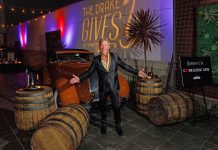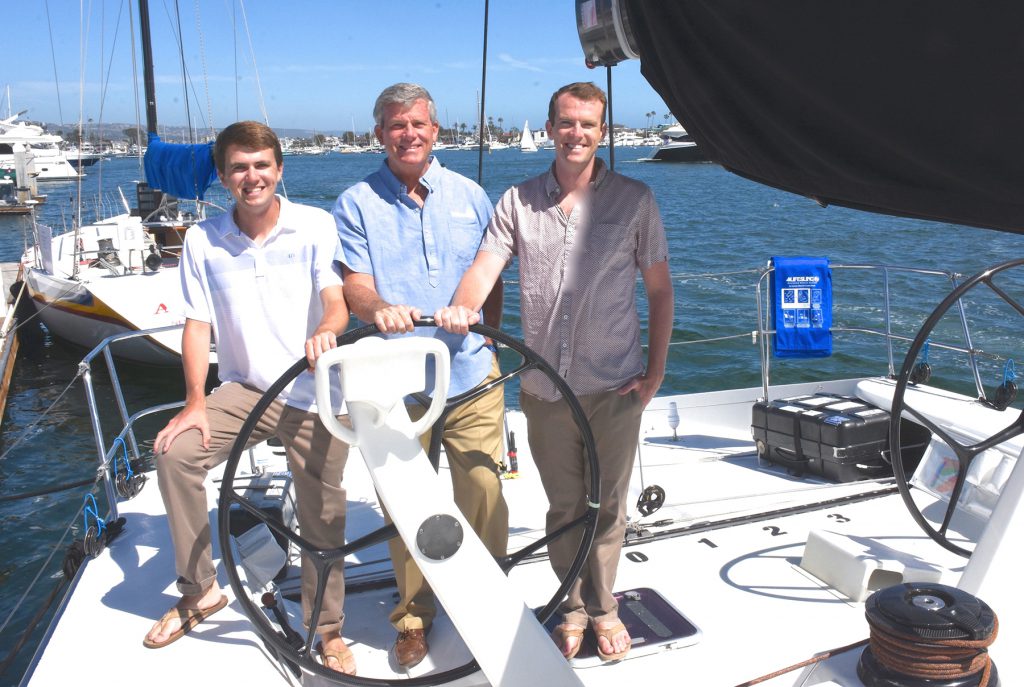
Main Story by Christopher Trela / Sidebar Story by Richard Simon
David Dahl has a fun outing with his sons planned for next week. Make that a challenging, exhilarating, and potentially exhausting outing.
Dahl, President and CEO of Whittier Trust and a resident of Newport Beach, and his sons David and Sean are competing in their first Transpacific Yacht Race that starts in San Pedro and ends 2225 miles later off Diamond Head in Honolulu, Hawaii.
Dahl has syndicated the Andrews 77-foot Compadres with several other crew members and will be racing alongside Lido Isle Yacht Club Vice Commodore and program moderator John Clement.
“We have three objectives: be safe, be fast and have fun,” said Dahl during an interview at the Newport Harbor Yacht Club.
Dahl said it should take his boat more than a week to reach Hawaii, which is why he noted that the race is “endurance rather than a sprint. The first day or two you want to go for the sprint and try to get into the trade winds, and then it’s endurance: stay awake, stay focused, stay concentrated, and remember it’s not a cruise, it’s a race.”
Whittier Trust is the Heritage Sponsor for the 51st Biennial Transpac Race, which makes sense since the Whittier family has been involved with the race since 1923, when the Transpac resumed sailboat racing after World War I and the Whittier brothers sailed the 107-foot yacht Poinsettia in the world’s longest-enduring ocean race.
Poinsettia was built in Germany for Crown Prince Frederick, confiscated by the Allies during the war, and brought to Los Angeles afterward by Max Whittier and his sons Don and Paul.
For the Transpac race, the Poinsettia was manned by a professional captain and first mate, a cook who had spent seven years in the service of former president Teddy Roosevelt, and a crew of 14 college boys, most of whom had never been to sea.
Not long into the race, a fierce storm blew the boat’s sails to ribbons, forcing Poinsettia to turn back.
The origins of the Transpacific Yacht Race dates back more than 100 years when the late Clarence MacFarlane of Honolulu found several mainland yachtsmen who agreed to a race to Honolulu in 1906. He sailed his 48-foot schooner, La Paloma, from Honolulu to San Francisco to join them in a race back to Waikiki, but he arrived a few weeks after the great San Francisco Earthquake of 1906, so that race did not happen.
Instead, MacFarlane sailed down to Los Angeles to join the Lurline and the Anemone for the first Honolulu Race, which started from San Pedro on June 11, 1906.
At last count, more than 40 boats have registered for this year’s Transpac. According to the Commodore of the Transpacific Yacht Club James Eddy, Manouch Mosayedi’s 100-footer, Rio100, and Roy Disney’s Volvo 70, Pyewacket 70, are the speedsters vying for first to finish.
The bulk of the fleet will be competing for corrected time trophies in their divisions, starts, and for overall, as well as other awards. Transpacific Yacht Club awards a wide variety of perpetual trophies that represent a magnificent collection of contributions from friends and family over the past 115 years.
The Race Committee has split the fleet into divisions to have exceptional competition within each division. There are brand-new boats and racing classics such as the Cal 40’s that first raced the Transpac 56 years ago. About half of the fleet is racing Transpac for the first time and the other half are returning race veterans—some many, many times.
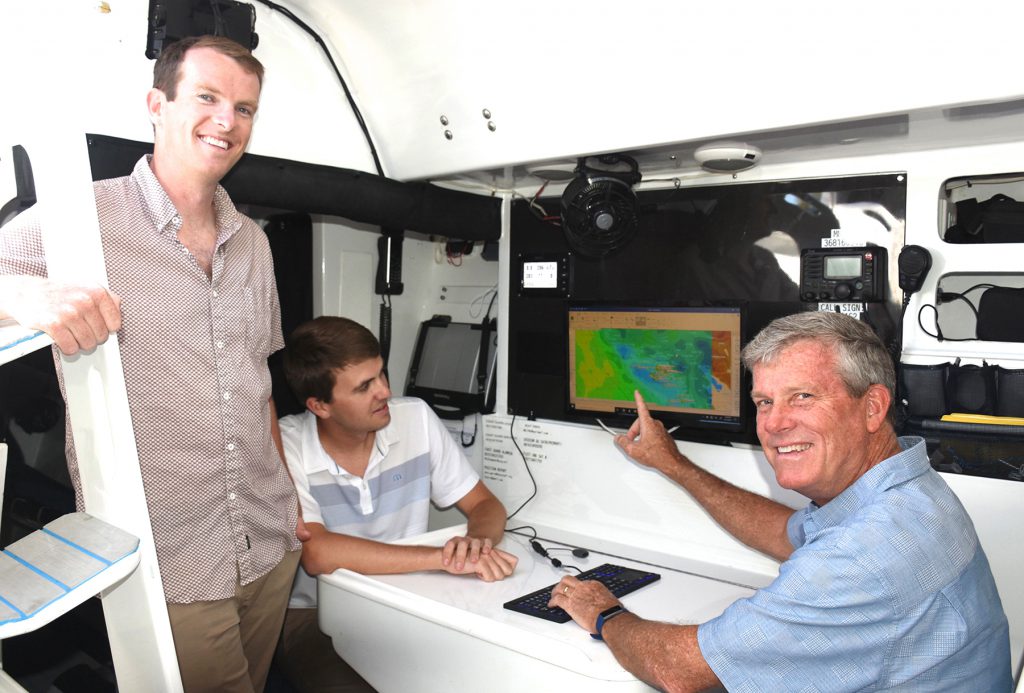
The Transpacific Yacht Club website explains that they are staggering the start dates in an effort to compress the fleet’s finish times, with the slower entries setting off on Tuesday July 13, faster entries on Friday July 16, and the fastest entries starting on Saturday July 17.
The speed each entry will make on the course will be determined by the size of the boat, the skill of the navigation team in developing a strategy based on the weather forecasts, and the skill of the on-watch team on deck to keep the boat moving at its maximum potential throughout the race.
Dahl said he and his crew have completed several practice races, including a 900-mile jaunt down to Cabo.
“That is about a third of the Transpac trip,” said Dahl. “That took two and a half days under heavier conditions than what we’ll experience on the trip to Hawaii. We also did two or three overnight trips. Now, we’re going for the big one.”
Dahl noted that racing in the Transpac is not a sport that you can just walk off the field if something happens.
“If you’re playing football or basketball or soccer, you can go and get whatever care you need, but when you are in the middle of the Pacific Ocean, you are closer to the space station, which is 250 miles up, than to any land mass, so you have to be prepared for any eventuality.”
Ultimately, said Dahl, “racing the Pacific, encountering whales, 20-foot swells, debris, and wind speeds at night with families on board and living up to the Whittier history and tradition of being prepared to handle anything is just like with investments. It is a test of the human spirit. Like chess, and our work, our strategy is multifaceted. We are also rewarded with being part of a team and the thrill of the experience.”
For more information on the Transpacific Yacht Race, visit www.transpacyc.com.
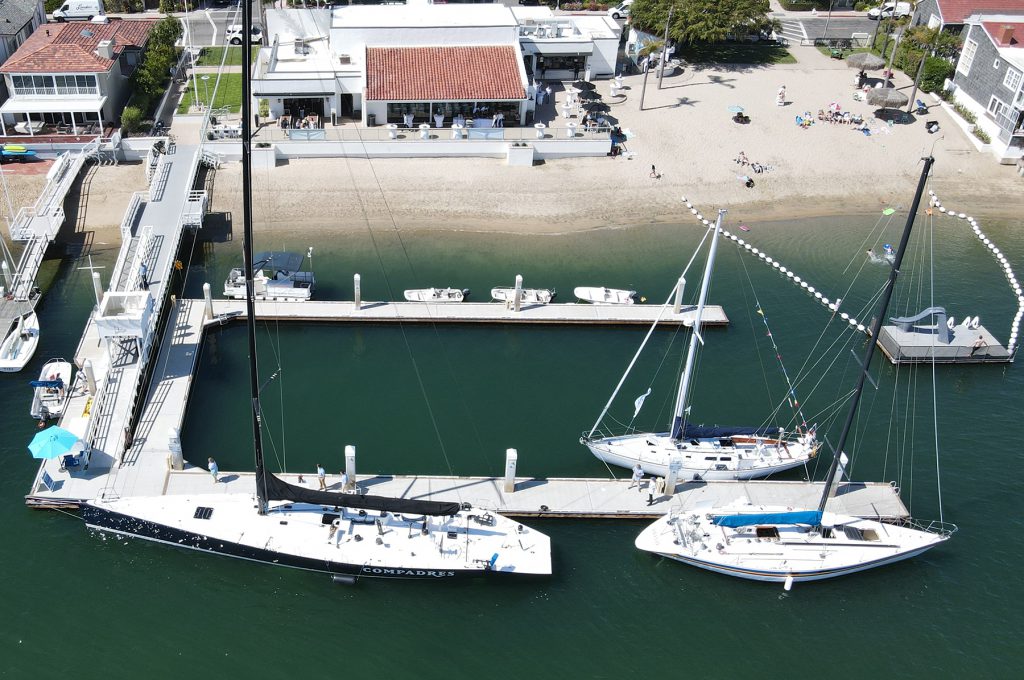
SIDEBAR: A Boat is Just a Boat Without Purpose or Crew
The underlying design element of any ship is its purpose, such as tourism, cargo transport, pleasure, combat.
Or in the case of the Newport Beach-berthed mega-racing sailing yacht, Compadres, just all-out speed to win any competition in which it’s entered – damn the crew comfort.
Compadres currently is being prepped for the upcoming 51st biennial edition of the Transpac, whose starter’s cannon will blast off over several days next week.
The boats in the race will suffer the stresses of maximum canvas as crews vie for first-to-finish honors in their respective classes. The fastest finishers should complete the race in seven to ten days—with cooperating winds and seas, that is.
Berthed at Lido Marina Village, the sleek, 18-year-old Andrews 77 Compadres can be compared to a stabled thoroughbred chomping at the bits to be let loose.
With a mast soaring more than 100 feet skywards to capture even the slightest of fluky breezes, Compadres can, according to owner David Dahl, “generate some pretty large loads,” but with some of the new furling sails and her specialized main, “it is very easy to keep her under control.”
Sporting a waterline of 66.5 feet, a beam of 15.5 feet, and 13,500 pounds of distributed water ballast to keep her on her lines, Compadres draws 9.5-feet draft with keel up, and 14-feet with keel down. Overall, she displaces 27,000 pounds.
Generically referred to as a “downwind boat,” or described as having a planning hull, Compadres’ race-honed crews have maxed her speed at nearly 31-knots in ideal conditions. Most engine-powered vessels can’t achieve those speeds.
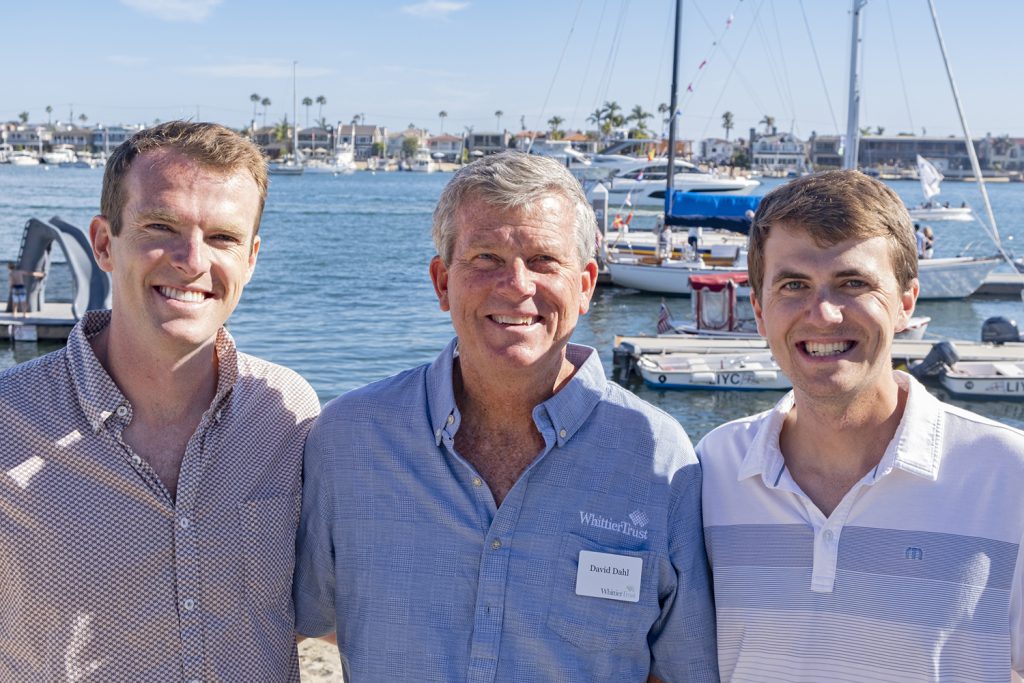
A sophisticated boat capable of such power requires a crew of experienced sailors, and Compadres has assembled such a team. They are:
- David Dahl: David has an extensive background in local racing and inland scow sailing. He will be competing in his first Transpac, along with his two sons, Michael and Sean.
- Michael Dahl: He is an avid Lehman 12 racer, and has spent the last 28 years dinghy sailing up and down the West Coast. This will be his first Transpac race.
- Sean Dahl: He grew up dinghy racing in Newport Harbor, alongside his brother. He has spent the last year campaigning Compadres. He will be navigating his first Transpac race.
- Bart Scott: He grew up racing sea scows and Hobie Cats on Lake Arrowhead before getting into offshore racing. Most of his sailing experience has been more focused on cruising, that is until his daughter, Brett, convinced him to do Transpac with her.
- Brett Scott: Brett started out racing Sabots and CFJs through the junior program at the Balboa Yacht Club; however, she tired of the small boats and wanted to go big time. This will be her first Transpac.
- Travis Winsor: He has been an avid sea scow racer on Lake Arrowhead. He has been campaigning Compadres along the West Coast for the past year, and this will be his first Transpac.
- John Clement: An avid racer since the 1980s, both in small boats and offshore, John has campaigned aboard such vessels as the classic Ragtime and other famous craft.
- Anton Visser: A seasoned sailor, he has focused on the more relaxed type of sea experiences. This will be his first Transpac.
- Don Yahn. Also an experienced sailor, this will be Don’s first Transpac.
- Tyler Wolk: Having learned to sail as a nine-year-old Boy Scout, Tyler became a professional sailor at 18 years of age. This will be his fifth Transpac. Hs has also sailed in the Sydney-to-Hobart race, and sailed with various classes around the world. He is Compadres’ fulltime skipper.
- Chris Bretschger: He has been a waterman for 35 years, having focused on the more relaxed mode of cruising. However, after an Ensenada race 20 years ago, Chris shifted to competitive sailing along the West Coast.
- David Wood: Having sailed since his youth, David is a US sailing world champion in Lazers, and he’s currently campaigning for the Olympics in the 49er class with teammate and now Transpac co-crewman Daniel Pegg.
- Daniel Pegg: A veteran West Coast competitor, this, too, will be Daniel’s first Transpac.
- Eric Christianson: Also a professional global sailor, Eric has completed five Transpacs.
Heading out to sea is the easiest thing a sailor can do; landing at one’s desired destination is another. Fortunately, the art of navigation has been made less demanding by virtue of the latest electronic devices, and Sean has mastered the art. With weather readings along with up-to-the minute boat position reports, Sean runs the routings through expedition software that he and the skippers of the watch review before deciding what refined course to steer for the coming hours.
Despite the beauty and sophistication of Compadres, it is nothing but pricey flotsam without the aforementioned team’s experience, enthusiasm competitiveness, mutual respect and fundamentally their love for each other and of the art of sailing.



